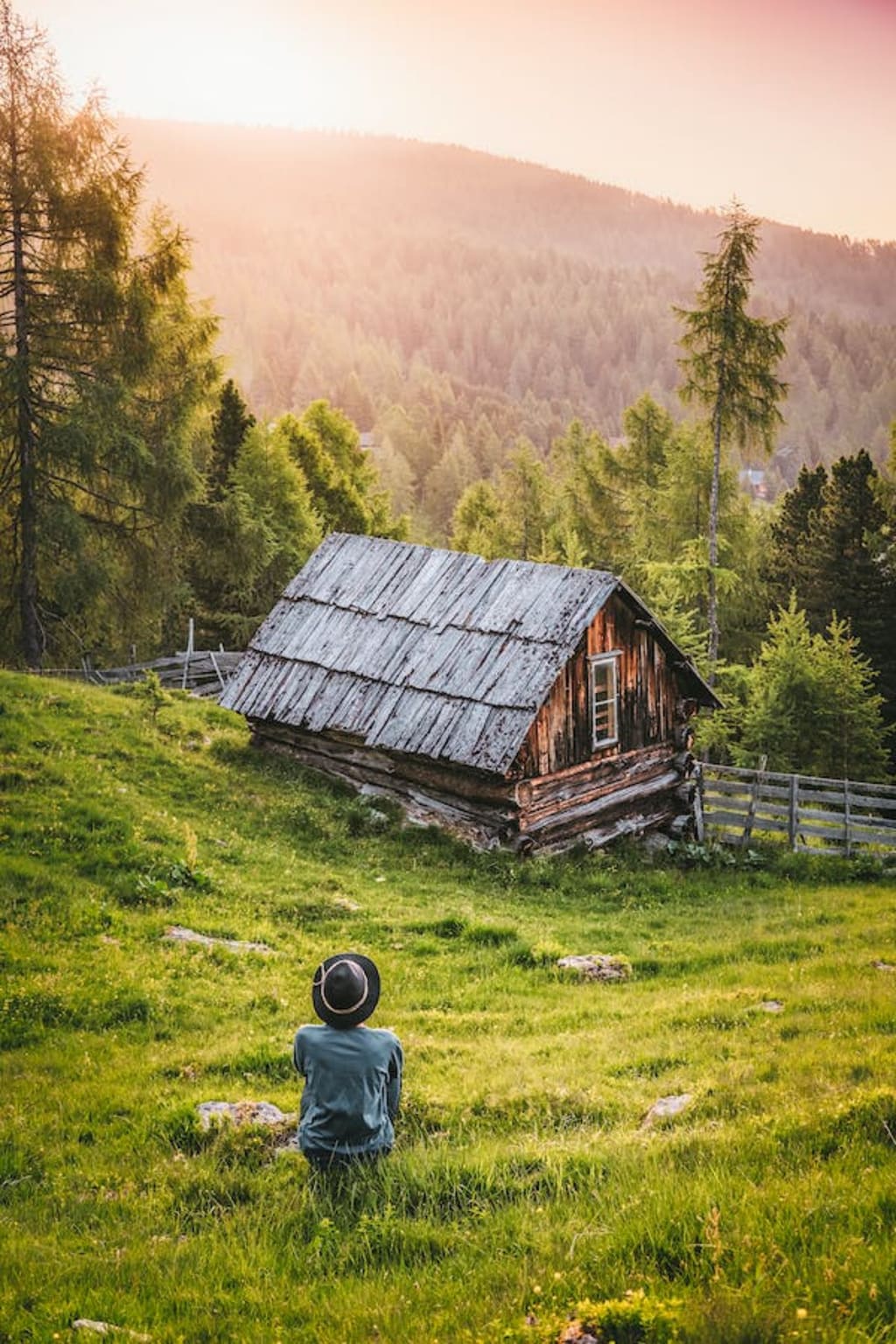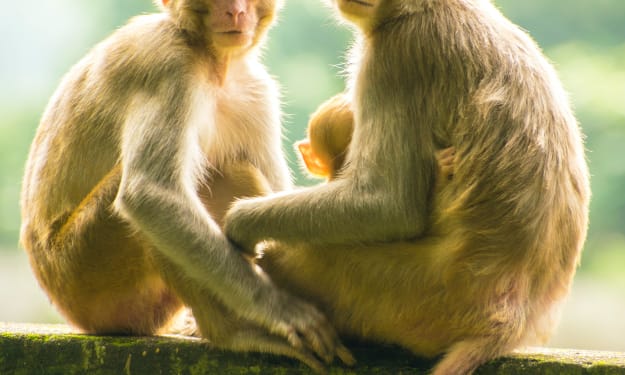HUMAN BEINGS AND THE ENVIRONMENT
"Bridging Nature and Humanity: A Sustainable Symbiosis"

In the vast tapestry of existence, human beings stand as both creators and custodians of the environment that sustains us. This intricate relationship between humanity and nature is a tale of profound interconnectedness, responsibility, and the potential for transformation.
From the earliest days of human history, our species has relied on the environment for survival. The rivers provided water, the forests offered shelter and food, and the land yielded its bounty. However, as civilizations grew, so did our impact on the environment. With progress came a growing sense of detachment from the natural world, leading to exploitation and overconsumption.
As societies advanced, the signs of imbalance became more evident. Pollution darkened the skies, rivers turned into toxic streams, and deforestation threatened entire ecosystems. Human beings had unwittingly become agents of degradation, their actions undermining the very systems that sustained them.
But within the depths of human consciousness, a realization began to dawn. Visionaries and activists arose, advocating for change and reconnecting humanity to its roots. The environmental movement emerged, uniting people across borders and cultures in a shared quest for a healthier planet. From local communities to international platforms, voices arose, calling for responsible stewardship of the Earth.
In this narrative, a pivotal chapter was written when world leaders gathered in Rio de Janeiro in 1992 for the Earth Summit. Here, the concept of sustainable development was crystallized—a path where human progress and environmental preservation could coexist. Agreements were made to address climate change, biodiversity loss, and the unsustainable exploitation of resources.
Over time, the urgency of the environmental crisis became undeniable. Extreme weather events, melting glaciers, and rising sea levels bore witness to the consequences of neglecting our planet. Yet, the story took a turn towards hope. Innovations flourished, from renewable energy sources to regenerative farming practices. People began to shift their lifestyles, embracing minimalism and conscious consumerism.
The bond between human beings and the environment deepened as a new generation grew up with a heightened ecological awareness. Education and advocacy became powerful tools for change, nurturing a global consciousness that recognized the interdependence of all life forms. Grassroots initiatives bloomed, restoring habitats, cleaning rivers, and protecting endangered species.
In the unfolding narrative, collaborative efforts yielded remarkable results. Reforestation projects revitalized barren landscapes, and urban planning embraced green spaces and eco-friendly architecture. Sustainable technologies flourished, offering cleaner alternatives to meet human needs. A transition to circular economies reduced waste, and policies promoting conservation gained traction.
The climax of this story arrived as the Paris Agreement of 2015 united nearly every nation under a common goal: mitigating climate change. Governments, industries, and individuals pledged to reduce emissions, adapt to the changing climate, and support the most vulnerable communities. This historic accord marked a collective commitment to safeguarding the environment for future generations.
As the narrative continues, human beings face both challenges and opportunities. The path to balance is not without hurdles, but the story showcases our capacity for transformation. It's a story of understanding that we are not separate from nature but an integral part of it, and our fate is intertwined with the health of the environment.
Ultimately, the tale of human beings and the environment is a story of redemption, resilience, and the remarkable potential for positive change. It's a narrative that invites us to reimagine our role on this planet, fostering a harmonious coexistence where the needs of humanity are met without compromising the delicate web of life that sustains us all.Humans have affected the environment in many ways, such as:
• Overpopulation: Humans have increased their population rapidly, which puts more pressure on the environment. More people means more demand for resources, such as food, water, and energy. This leads to more land use, deforestation, and greenhouse gas emissions. Some experts believe that overpopulation is a major cause of environmental degradation and climate changehttps://www.nationalgeographic.org/topics/resource-library-human-impacts-environment/.
• Pollution: Humans have introduced harmful substances into the environment, such as chemicals, plastics, and metals. These substances can contaminate the air, water, and soil, and affect the health of humans and other living organisms. Pollution can also reduce visibility, damage buildings, and alter the natural cycles of the environmenthttps://interestingengineering.com/lists/11-ways-humans-impact-the-environment.
• Deforestation: Humans have cut down large areas of forests for various purposes, such as agriculture, logging, mining, and urban development. Forests are important for maintaining biodiversity, regulating climate, and providing ecosystem services. Deforestation can lead to soil erosion, habitat loss, species extinction, and carbon dioxide releasehttps://www.khanacademy.org/science/middle-school-earth-and-space-science/x87d03b443efbea0a:earth-and-society/x87d03b443efbea0a:human-impacts-on-the-environment/a/human-impacts-on-the-environment.
• Climate change: Humans have increased the concentration of greenhouse gases in the atmosphere, such as carbon dioxide, methane, and nitrous oxide. These gases trap heat and warm up the planet. Climate change can have many impacts on the environment, such as melting ice caps, rising sea levels, extreme weather events, droughts, floods, and wildfires.
These are some of the ways that humans have affected the environment. If you want to see how these impacts might look like as an image, you can use my graphic art tool with a prompt like "a scene of pollution in a city" or "a scene of deforestation in a forest". I hope you find this information helpful and interesting. blushhttps://www.nationalgeographic.org/topics/resource-library-human-impacts-environment/: Here's 11 ways humans impact the environment on Earthhttps://interestingengineering.com/lists/11-ways-humans-impact-the-environment: Pollution - National Geographic Societyhttps://www.khanacademy.org/science/middle-school-earth-and-space-science/x87d03b443efbea0a:earth-and-society/x87d03b443efbea0a:human-impacts-on-the-environment/a/human-impacts-on-the-environment: Human Impacts on the Environment - National Geographic Society
: Climate Change - National Geographic Society
About the Creator
Enjoyed the story? Support the Creator.
Subscribe for free to receive all their stories in your feed. You could also pledge your support or give them a one-off tip, letting them know you appreciate their work.





Comments
There are no comments for this story
Be the first to respond and start the conversation.